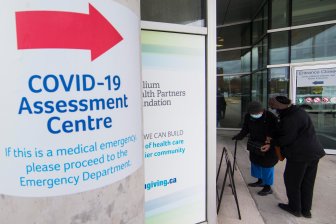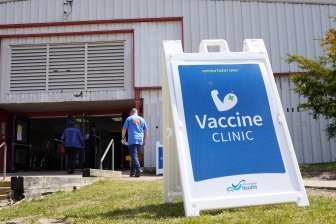New national data shows just how well COVID-19 vaccines are working to bring down the severity of the third wave in Canada.

Based on data provided by the provinces and territories up to May 25, only 0.15 per cent of vaccinated Canadians became infected by the virus 14 days or more after their first dose.
“Compared to unvaccinated cases in these jurisdictions, these people were more likely to report no symptoms and less likely to experience severe illness requiring hospitalization,” Theresa Tam, Canada’s top doctor, said at a federal COVID-19 briefing on Friday.
“This aligns well with vaccine effectiveness studies showing strong protection against severe illness.”
The latest projections of the pandemic in Canada suggest a glimmer of hope on the horizon.
With more than 22 million doses of COVID-19 vaccines having been administered across Canada so far, providing 62 per cent of eligible Canadians with at least one dose, Tam says the trajectory is “very encouraging.”
Hospitalizations have reduced in a “significant fashion,” Dr. Howard Njoo, Canada’s deputy chief public health officer, said in French.
The numbers of cases, ICU admissions and deaths also continue to decline in most provinces.
Hospitalizations are still too high in some areas like Manitoba, the doctors noted, where a surge of COVID-19 is putting a strain on the provincial health-care capacity.

“The good news is that we expect the third wave to continue to decline, as long as we maintain current measures and don’t increase the in-person contact rates across communities,” Tam said.
“It’s very encouraging but reaffirms that now is not the time to relax restrictions.”
Despite that warning, many provinces are readying plans to do just that. Ontario, Alberta, British Columbia and Quebec are among those that have laid out a roadmap for how they plan to reopen in the coming weeks.
While all are contingent on provincial case counts, hospital capacities and vaccination rates, some of the plans are ambitious and include the return of indoor activities once certain benchmarks are met.
Tam said she prefers to take a very “precautionary approach.”
“We know the vaccines are going to help but we haven’t got the one dose into everybody yet and the curve is only just over 50 per cent reduction from the peak,” she said.
“Patios and outside spaces of course are less risky, so beginning with those spaces — people do need to go outside — those are lower-risk areas. Doing that cautiously and then waiting to see what happens before you do your next phase is very much advocated.”
The national modelling shows that most public health measures like lockdowns could be lifted this summer, but only when 75 per cent of the population 12 years of age or older has received at least one dose of a COVID-19 vaccine and at least 20 per cent has been fully vaccinated.

Tam and Njoo stressed that “high vaccine coverage levels in all age groups” are critical to ensure a more robust return to normal in the fall.
Njoo said younger age groups are a “very important” part of the equation now because they represent an “essential aspect of the vaccine plan.”
“Younger persons in the country are waiting quite impatiently for their turn…. The good news is your turn has now arrived and the modelling shows that your participation is very important.”
View link »© 2021 Global News, a division of Corus Entertainment Inc.
‘Very encouraging’: Only 0.15% of Canadians caught COVID-19 after getting vaccinated - Global News
Read More


Tidak ada komentar:
Posting Komentar